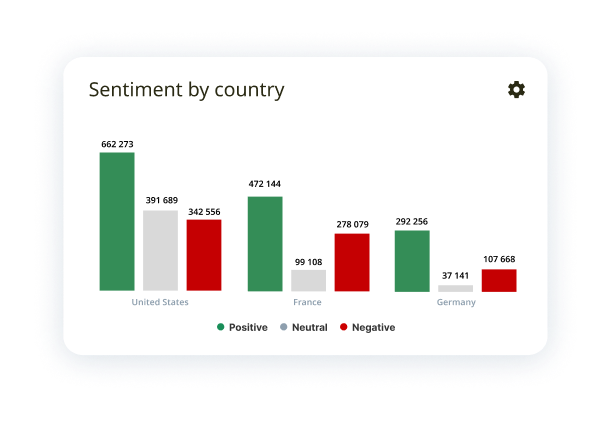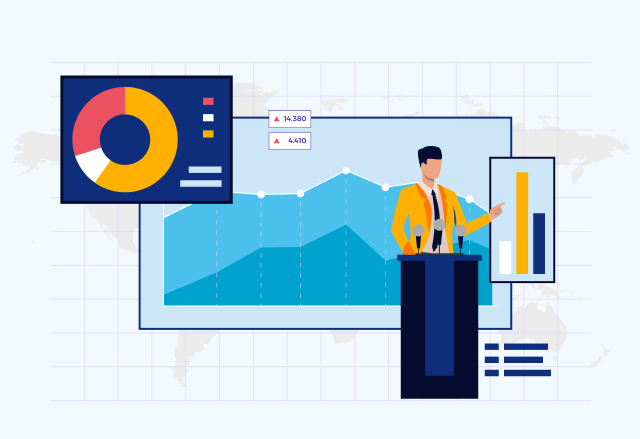Media monitoring has become essential in political campaigning, offering a competitive edge and strengthening voter connections. The digital age has transformed the landscape of political communication, making it more complex but offering unprecedented opportunities for engagement.
Covering traditional and social media gives campaigns instant insights into public sentiment, message effectiveness, and how the public perceives candidates.
Media monitoring helps campaigns adjust to changes, fine-tune messages for specific demographics, and manage the complex media landscape.
This article explores media monitoring’s crucial role in campaigns, focusing on its strategic importance, success impact, integration benefits, and examples of successful use.
Table of contents
Enhancing Strategies with Media Monitoring in Political Campaigns
Diligent media monitoring lets campaigns keep up with new trends and public sentiment, guiding them to informed decisions. This strategic advantage makes it easy to fine-tune campaign messages and adapt strategies to better align with voter preferences.
Social media monitoring adds flexibility, allowing quick action on emerging issues, correcting misinformation, and engaging with supporters and undecided voters.
Combining media and social media monitoring creates a robust strategy, helping campaigns connect better with their audience in today’s digital landscape.
Driving Political Campaign Success with Strategic Media Monitoring
Strategic media monitoring plays a crucial role in the success of political campaigns by enabling meticulous analysis of media coverage. This analysis helps campaigns measure the resonance of their messaging, maintain a pulse on public sentiment, and identify potential controversies or issues before they escalate.
Proactive adjustments of campaign narratives in real-time ensure messages reach and resonate with the intended audience.
Beyond protecting a campaign’s image, media monitoring assesses reach and influence, tracking competitors and revealing strategic opportunities for alliances or endorsements that could shift a campaign’s direction.
Incorporating media monitoring across various channels aids in detecting emerging trends, critical issues, and shifts in public opinion, enabling the creation of tailored messages and strategic adjustments that align with voter concerns and interests.
Social media monitoring further augments these benefits by providing real-time feedback on messaging and events, leading to swift strategic recalibrations and messaging refinements that enhance engagement and effectiveness. This immediacy is invaluable for targeted outreach, allowing campaigns to address the unique concerns and aspirations of specific voter demographics.

Moreover, the insights gained from comprehensive media monitoring offer a competitive edge through a detailed analysis of rivals’ strategies and public reception. This aids in benchmarking performance and adapting strategies to maintain competitiveness. Effective crisis management through preemptive identification and resolution of potential controversies further safeguards the campaign’s public image.
Additionally, monitoring the social media landscape helps identify influential voices and potential allies, creating opportunities to amplify campaign messages and broaden reach through strategic influencer engagements.
Integrating media and social media monitoring provides campaigns with tools for clear communication, flexibility in strategy, and greater impact. This solid foundation supports achieving campaign goals, making comprehensive media monitoring essential for campaigns aiming to genuinely engage with voters and manage today’s complex media environment.
Success Stories: The Impact of Media Monitoring on Political Campaigns
Below are some real cases that show the positive effects media monitoring had on political campaigns from various elections.
In 2008, Barack Obama’s campaign used media monitoring to understand public sentiment, identify key issues, and tailor its messages. It also used social media to engage with voters, building a strong online community that boosted the campaign’s momentum. This approach facilitated targeted voter engagement and cultivated a robust grassroots movement, which made his campaign successful.
His campaign was notable for its innovative use of social media monitoring to engage voters through platforms like X (formerly Twitter) and Facebook, fostering a vibrant online community that contributed significantly to the campaign’s momentum.
By 2016, Donald Trump’s campaign showcased social media monitoring’s ability to grasp and mobilize voter sentiment, giving his messages extensive and powerful reach.

The 2016 Brexit referendum saw both the Leave and Remain camps employing media monitoring to decode public sentiment and customize their messages to resonate with their respective audiences. This strategic manoeuvring underscored the critical role of media monitoring in conveying compelling narratives and rallying support.
In New Zealand, Jacinda Ardern’s 2017 campaign used social media monitoring to engage younger voters, building significant online support. Proving its effectiveness is not limited to the U.S.
These cases underline the essential role of media and social media monitoring in campaigns today. With vital insights, campaigns adjust to public opinion shifts, gain support, and manage traditional and digital media challenges.
By tapping into the rich vein of data and sentiment analysis provided by media monitoring, political campaigns can enhance their strategic communications and boost their chances of electoral success.
Comprehensive Guide to Media Monitoring for Winning Campaigns
Maximizing the impact of your political campaign requires a nuanced understanding and application of media monitoring. To better navigate this landscape, consider the following consolidated strategies:
- Define Clear Objectives: Start with a clear definition of your goals. Ensure your media and social media monitoring goals align with your campaign objectives.
- Select Appropriate Tools: Choose media monitoring tools that align with your campaign’s needs and financial parameters. Choose tools with comprehensive coverage, in-depth analysis, real-time analytics, and ease of use.
- Diversify Your Sources: Your chosen tool should capture a holistic view of public sentiment and monitor various media outlets. These include traditional media, social media platforms, and online news sources. Understanding where your audience congregates and communicates will make your monitoring efforts more targeted and effective.
- Analyze Insights for Action: Collecting data alone is insufficient. Dedicate resources to analyze and interpret this data to unearth actionable insights. Look for trends, sentiment shifts, and patterns that can inform your campaign strategy and messaging.
- Maintain Agility: The dynamic nature of public sentiment and media discourse requires campaigns to be agile. Adapt your strategy as new insights emerge from media monitoring to keep your campaign current and responsive.
- Engage Proactively: Use the insights gained from media monitoring to find opportunities for meaningful engagement. Respond to public sentiment, join conversations, and tackle concerns promptly to maintain a positive online presence.
- Evaluate and Adjust Continuously: Implement regular evaluations and adjustments to your media monitoring strategy. Regularly evaluate your strategy to pinpoint improvements, embrace new trends and technologies, and refine your methods to stay competitive.
By adhering to these strategies, political campaigns can leverage media and social media monitoring to their advantage. This boosts your campaign’s message and strategy effectiveness, deepening voter connections and leading to a more responsive campaign.
Conclusion
The strategic application of media monitoring stands as a linchpin in the realm of modern political campaigns.
Media monitoring provides a broad view of public sentiment, supports quick adjustments to new narratives, and helps build strong voter relationships. It gives campaign teams the insights to improve messaging, proactively manage their image, and address voter concerns.
The successful campaigns of Barack Obama, Donald Trump, and Jacinda Ardern show media monitoring’s ability to understand public opinion and achieve electoral wins. They emphasize staying in tune with and adapting to voter preferences and ensuring genuine interaction.
As the digital age reshapes political landscapes, media monitoring remains crucial for engaging and communicating effectively. It’s essential to keep up with digital changes, deepen voter connections, and pave the way to electoral success.
Empower Your Campaign Today
Unlock the full potential of your political campaign with cutting-edge media monitoring solutions.
Our platform offers the unparalleled advantage of real-time analytics, comprehensive coverage, and intuitive interfaces designed to amplify your campaign’s reach and impact. In a rapidly changing digital environment, securing a strategic edge is paramount.
Schedule a demo now and discover firsthand how our solutions can provide you with the actionable insights and competitive edge necessary to thrive in the fast-paced political landscape.



